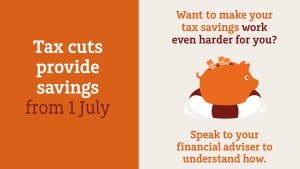Keep your attention on one task at a time
Try to break projects down into small tasks you can focus on one at a time. Write a realistic ‘to do’ list at the start of the day. Try highlighting the few most important things and focus your energy on those. Avoid checking your phone, social media or emails as a distraction from your work.
Listen to your body
Take a few minutes to notice how your body feels. Where do you feel tension or tightness? Where do you feel comfortable or uncomfortable? Try to just observe your current physical state. Alternatively, try tensing different parts of the body and then letting it go.
Pay attention to your breathing
Pay attention to your breath. Notice where you feel breath movement most strongly. It might be the stomach, as it rises and falls. It might be the nose or mouth, where you inhale and exhale. Don’t try to control the breath. Just bring your attention to it, exactly as it is.
Notice the sounds around you
Notice the sounds around you. Don’t get caught up in the conversations of others but focus your attention on the voice tone and pitch around you. Pay attention to background noises – typing on keyboards or a machine hum. Try counting how many different noises you can notice in the space of a few minutes.
Pay attention to routine sensations
Pick a routine activity, like drinking tea or eating an apple, and focus on your sensory experience. Notice the tea cup’s warmth in your hands, how it feels on your lips. Notice the liquid’s smell and flavour as it enters your mouth and travels down your throat. If eating an apple, try to notice everything about it before you take a bite – the colour, smell, firmness, distinguishing marks and shape. Pay attention to the flavor burst as you take your first bite and note every sensory feeling you have while consuming it.
Make a thought-list
If your mind is cluttered with too many thoughts at once, write a list of all the things on your mind. Then put the list away and tell yourself you will think about them later. At the moment, you are concentrating on the task at hand.
Accept work is busy
Rather than wishing things were different, accept them the way they are and focus on staying mindful, despite how busy work might be.
Let things go
Accept there is never enough time to get everything done. Focus on the most important tasks and let the other things go. Don’t dwell on past mistakes. Make a note of what to improve in the future and then get your mind back to what you’re doing in the present.
Observe your thoughts as passing objects
When thoughts come into your mind, try to visualise them as passing cars. You don’t have to force unwanted thoughts away; they are just traffic that drives past. You don’t have to get inside the car and let it take you away from what you’re doing. You can stay present and let the traffic pass.
Notice transitions
When arriving at and leaving work, be aware of the transition of mental states, rather than rushing from one thing to the next. Take a few minutes to just pay attention to what you’re doing – maybe it’s turning off the computer or shutting down other equipment. Try to notice the sounds and sensations and give yourself a moment to transition from one place to the next.
Try taking a deep breath in as you leave work, acknowledge the positives you have done for the day and, as you exhale, let it all go.
Research:
http://selfdeterminationtheory.org/SDT/documents/2003_BrownRyan.pdf
Kabat-Zinn, J., & Hanh, T. N. (2009). Full catastrophe living: Using the wisdom of your body and mind to face stress, pain, and illness.
Kabat-Zinn, J. (1994). Wherever you go, there you are: Mindfulness meditation in everyday life. Hyperion
The information, including tax, provided in this document is general information only and does not constitute personal advice. It has been prepared without taking into account any of your individual objectives, financial solutions or needs. Before acting on this information you should consider its appropriateness, having regard to your own objectives, financial situation and needs. You should read the relevant Product Disclosure Statements and seek personal advice from a qualified financial adviser. From time to time we may send you informative updates and details of the range of services we can provide. If you no longer want to receive this information please contact our office to opt out. The views expressed in this publication are solely those of the author; they are not reflective or indicative of Licensee’s position, and are not to be attributed to the Licensee. They cannot be reproduced in any form without the express written consent of the author.







